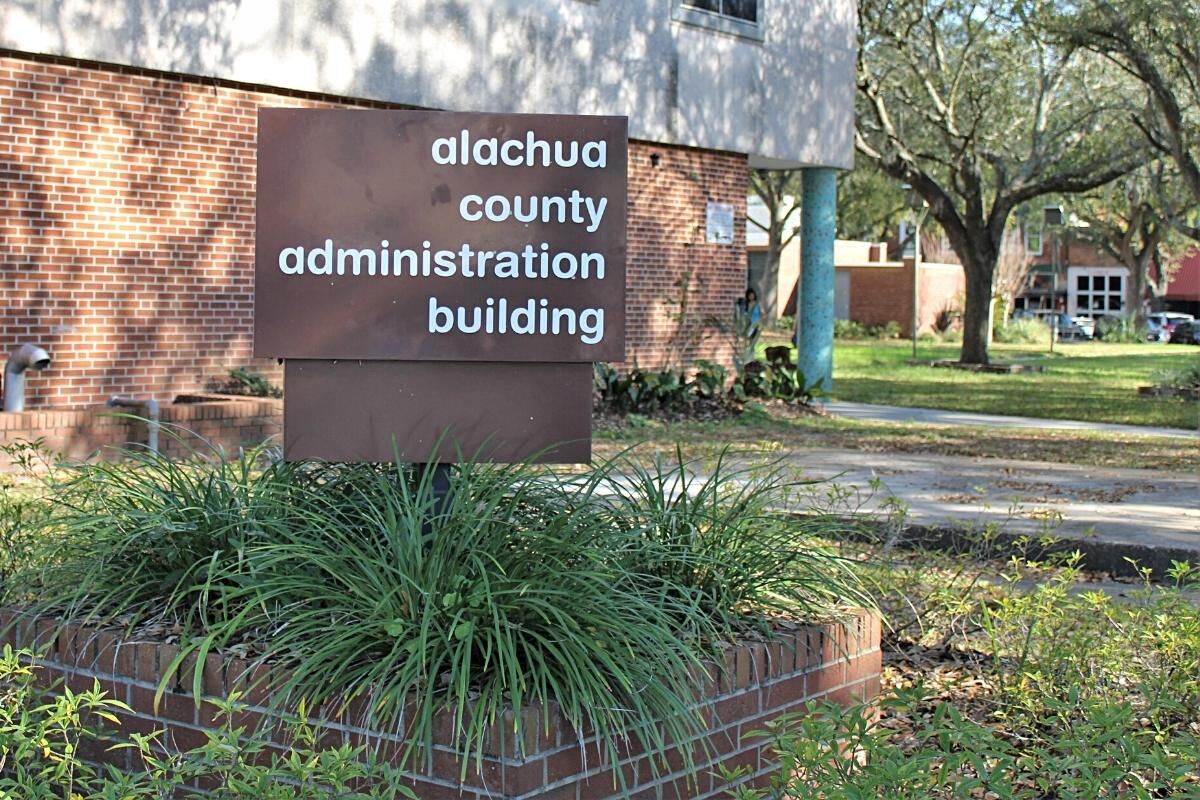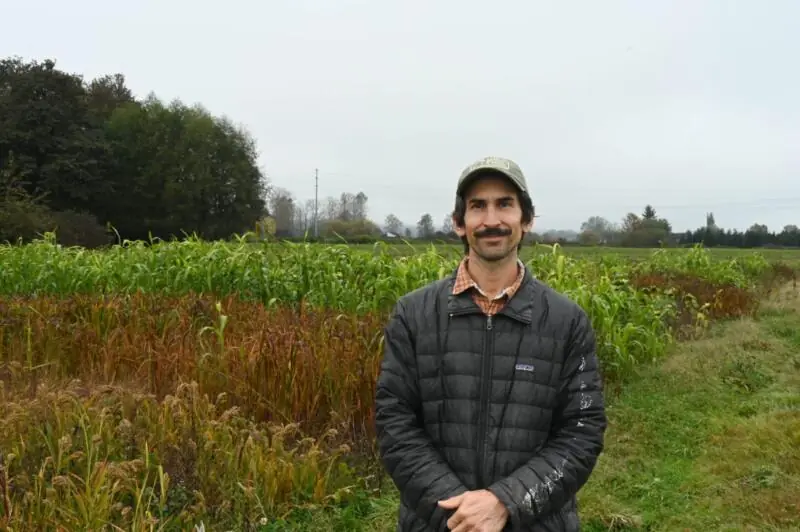Alachua County keeps district map, OKs wetland impact on 1,067-acre site – Mainstreet Daily News

Alachua County Commission Decisions on Sustainable Development and Governance
Industrial Development and Environmental Stewardship: Hawthorne Industrial Park
The Alachua County Board of County Commissioners (BOCC) made a critical decision regarding the 1,067-acre Hawthorne Industrial Park, balancing objectives for economic growth with commitments to environmental protection, reflecting a direct engagement with multiple Sustainable Development Goals (SDGs).
-
Fostering Economic Growth and Resilient Infrastructure (SDG 8 & SDG 9)
- The proposed industrial park is positioned as a unique asset in the region, featuring strategic access to a CSX railway line and major roadways (US 301 and US 24).
- This infrastructure is intended to attract significant industrial investment, promoting sustained, inclusive, and sustainable economic growth and creating opportunities for decent work.
- Developers emphasized the need for regulatory certainty to make the site “shovel-ready,” a key factor in competing for industrial projects that drive economic development.
-
Protecting Life on Land and Water (SDG 15 & SDG 14)
- A central conflict arose over the project’s impact on local wetlands, which are vital for biodiversity and ecosystem health. The initial developer plan proposed 87 acres of wetland impacts, countered by a county staff recommendation of 15 acres.
- The developer’s proposal included a significant off-site mitigation plan of 443 acres adjacent to the Little Orange Creek Nature Preserve, arguing this would protect higher-quality wetlands than those on the silviculture-impacted project site.
- This debate highlights the challenge of conserving and restoring terrestrial and freshwater ecosystems in the face of development pressures.
-
Achieving a Sustainable Compromise through Partnership (SDG 17)
- The BOCC unanimously approved a compromise solution that integrates economic and environmental goals.
- The final motion permits up to 44 acres of wetland impacts but explicitly protects on-site wildlife corridors from development, safeguarding biodiversity pathways.
- Crucially, the decision incorporates the developer’s full off-site mitigation plan, demonstrating a partnership approach to achieving a net positive environmental outcome while allowing the project to advance.
Governance and Institutional Integrity: Commissioner Redistricting
The BOCC also addressed the county’s redistricting process, a foundational element of building effective, accountable, and inclusive institutions as outlined in SDG 16.
-
Ensuring Responsive and Inclusive Institutions (SDG 16)
- After a public submission process, the BOCC had given preliminary approval to a new district map.
- However, this decision was reversed following significant public feedback and concern from citizens, demonstrating the institution’s responsiveness to its constituency.
- Commissioners acknowledged that many residents were not fully aware of the process, highlighting the need for more robust public engagement.
-
Strengthening Democratic Processes (SDG 16)
- The decision to revert to the existing district map was influenced by a recent court ruling that established at-large districts for the 2026 election. This change reduced the immediate pressure to finalize new boundaries.
- The Board opted to postpone the redistricting effort to allow for a longer, more transparent timeline, ensuring that future decisions on representative boundaries are made with full public participation.
- This action reinforces a commitment to transparent and accountable governance, which is a cornerstone of sustainable development.
Analysis of Sustainable Development Goals in the Article
1. Which SDGs are addressed or connected to the issues highlighted in the article?
- SDG 8: Decent Work and Economic Growth
- SDG 9: Industry, Innovation and Infrastructure
- SDG 11: Sustainable Cities and Communities
- SDG 15: Life on Land
- SDG 16: Peace, Justice and Strong Institutions
2. What specific targets under those SDGs can be identified based on the article’s content?
SDG 8: Decent Work and Economic Growth
-
Target 8.2: Achieve higher levels of economic productivity through diversification, technological upgrading and innovation.
Explanation: The development of the “Hawthorne Industrial Park” is intended to attract “big industrial companies,” which directly relates to promoting economic productivity and industrialization in the region. The article mentions the goal is to get the project “shovel-ready as possible, to be competitive,” highlighting the focus on economic development.
SDG 9: Industry, Innovation and Infrastructure
-
Target 9.1: Develop quality, reliable, sustainable and resilient infrastructure, including regional and transborder infrastructure, to support economic development and human well-being.
Explanation: The article emphasizes the site’s strategic value due to its existing infrastructure, noting it “has access to an active CSX railway line with connections to ports in Tampa and Jacksonville” and borders “two major roadway connections: US 301 headed to I-10 and US 24.” This infrastructure is presented as a key factor for the industrial park’s success.
SDG 11: Sustainable Cities and Communities
-
Target 11.3: By 2030, enhance inclusive and sustainable urbanization and capacity for participatory, integrated and sustainable human settlement planning and management in all countries.
Explanation: The article details a local planning process involving multiple governing bodies (Alachua County BOCC, City of Hawthorne) and public mandates (“a referendum passed by voters”). The debate over wetland impacts versus industrial development is a core component of sustainable settlement planning, balancing economic needs with environmental protection.
SDG 15: Life on Land
-
Target 15.1: By 2020, ensure the conservation, restoration and sustainable use of terrestrial and inland freshwater ecosystems and their services, in particular forests, wetlands, mountains and drylands, in line with obligations under international agreements.
Explanation: The central conflict discussed is the “wetland impacts” of the industrial park. The entire debate, including the developer’s proposal, the county staff’s counter-proposal, and the final compromise, revolves around the use and conservation of wetland ecosystems. -
Target 15.5: Take urgent and significant action to reduce the degradation of natural habitats, halt the loss of biodiversity and, by 2020, protect and prevent the extinction of threatened species.
Explanation: The final motion passed by the BOCC explicitly protects “wildlife corridors on the property” from impacts, demonstrating a direct action to reduce the degradation of natural habitats essential for biodiversity. -
Target 15.9: By 2020, integrate ecosystem and biodiversity values into national and local planning, development processes, poverty reduction strategies and accounts.
Explanation: The fact that Alachua County has the authority for “final approval for all wetland impacts” and engages in a detailed negotiation process demonstrates the integration of ecosystem values into the local development and planning process.
SDG 16: Peace, Justice and Strong Institutions
-
Target 16.7: Ensure responsive, inclusive, participatory and representative decision-making at all levels.
Explanation: The section on “BOCC districts” describes a public and participatory process. The county “opened the redistricting process to the public to submit options,” receiving 12 maps. A commissioner’s decision to “change my mind” was based on feedback from “multiple citizens,” showing a responsive decision-making process by a local institution.
3. Are there any indicators mentioned or implied in the article that can be used to measure progress towards the identified targets?
Indicators for SDG 15 (Life on Land)
- Area of wetland impacted: The article provides specific figures that can be used as indicators. The initial plan proposed “87 acres of wetland impacts,” the county staff countered with “15 total acres,” and the final approved motion allowed “up to 44 acres of wetland impacts.” This quantifies the extent of ecosystem alteration.
- Area of land used for mitigation: The developer’s plan included “443 acres of off-site wetland mitigation.” This figure serves as an indicator for restorative actions taken to compensate for environmental impacts.
- Protection of wildlife corridors: The approved motion stipulated “no impacts within the wildlife corridors on the property, without separate approval,” with an exception for two specific crossings. The status and integrity of these corridors can be monitored as an indicator of habitat protection.
Indicators for SDG 16 (Peace, Justice and Strong Institutions)
- Level of public participation in decision-making: The article implies this can be measured by the number of public submissions, stating the “BOCC received 12 options” for redistricting maps from the public.
- Responsiveness of institutions to public feedback: While qualitative, the article provides a clear example of this. A commissioner’s vote was changed directly because she “had too many people with real, real, real concerns about it,” indicating that public input directly influenced the institutional outcome.
4. Create a table with three columns titled ‘SDGs, Targets and Indicators” to present the findings from analyzing the article.
| SDGs | Targets | Indicators |
|---|---|---|
| SDG 8: Decent Work and Economic Growth | 8.2: Achieve higher levels of economic productivity. | Development of a 1,067-acre industrial park to attract large companies. |
| SDG 9: Industry, Innovation and Infrastructure | 9.1: Develop quality, reliable, sustainable and resilient infrastructure. | Utilization of existing infrastructure (CSX railway, US 301, US 24) to support industrial development. |
| SDG 11: Sustainable Cities and Communities | 11.3: Enhance inclusive and sustainable urbanization and capacity for participatory, integrated and sustainable human settlement planning. | County-level approval process for wetland impacts within city limits, balancing development and environment. |
| SDG 15: Life on Land | 15.1: Ensure the conservation, restoration and sustainable use of terrestrial and inland freshwater ecosystems. | – Area of wetland impact approved (up to 44 acres). – Area of off-site wetland mitigation (443 acres). |
| 15.5: Take urgent and significant action to reduce the degradation of natural habitats. | Stipulation of “no impacts within the wildlife corridors on the property.” | |
| 15.9: Integrate ecosystem and biodiversity values into local planning. | The existence of a BOCC approval process specifically for wetland impacts in development plans. | |
| SDG 16: Peace, Justice and Strong Institutions | 16.7: Ensure responsive, inclusive, participatory and representative decision-making at all levels. | – Number of public map submissions for redistricting (12 options). – Reversal of a decision based on citizen feedback against a proposed map. |
Source: mainstreetdailynews.com
What is Your Reaction?
 Like
0
Like
0
 Dislike
0
Dislike
0
 Love
0
Love
0
 Funny
0
Funny
0
 Angry
0
Angry
0
 Sad
0
Sad
0
 Wow
0
Wow
0















































/environment-climate-change-and-health-(ech)/water-sanitation-hygiene-and-health-(wsh)/landfill-tuvalu-36092.tmb-1200v.jpg?sfvrsn=5c21fe40_1#)


.jpg.webp?itok=0ZsAnae9#)

























